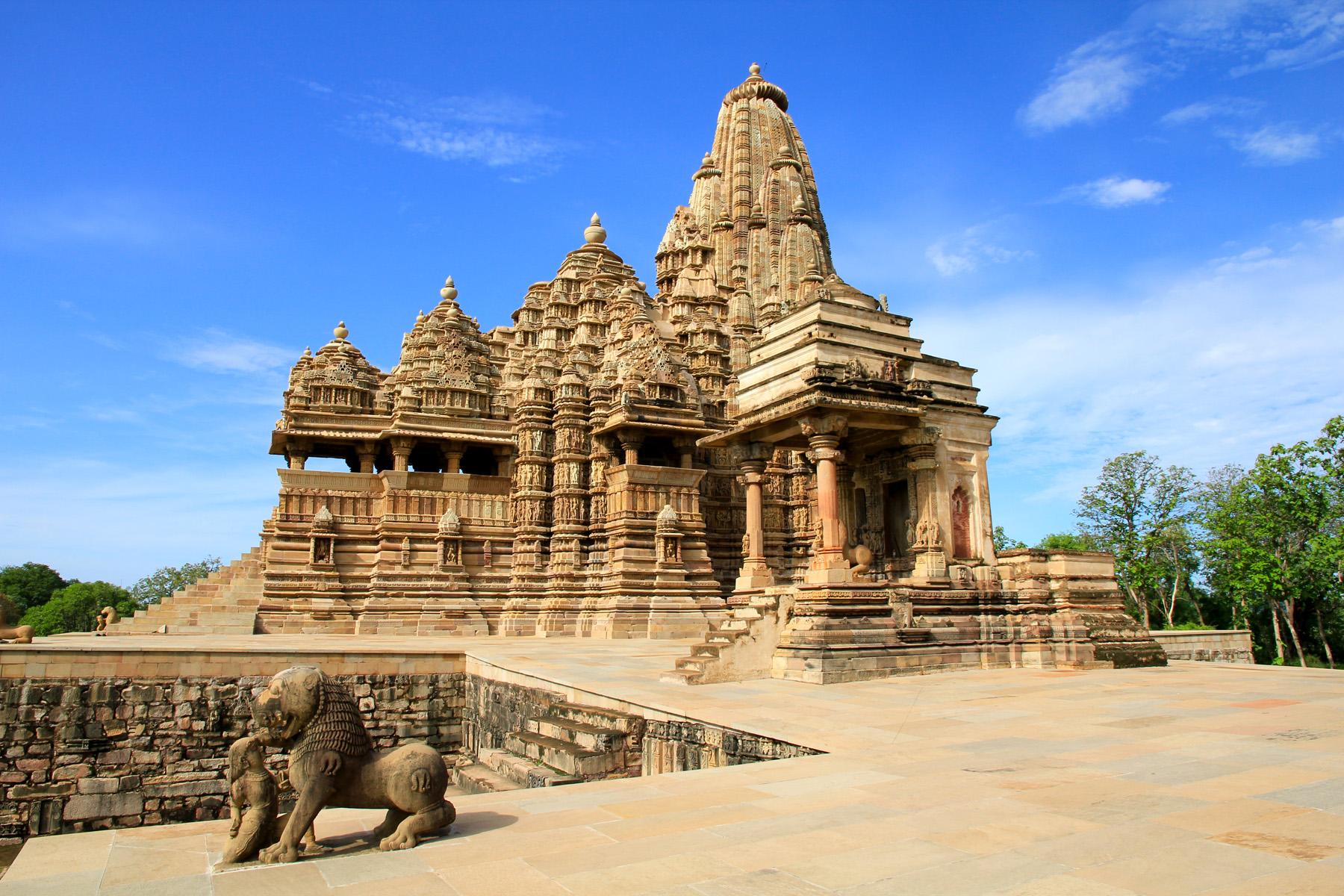
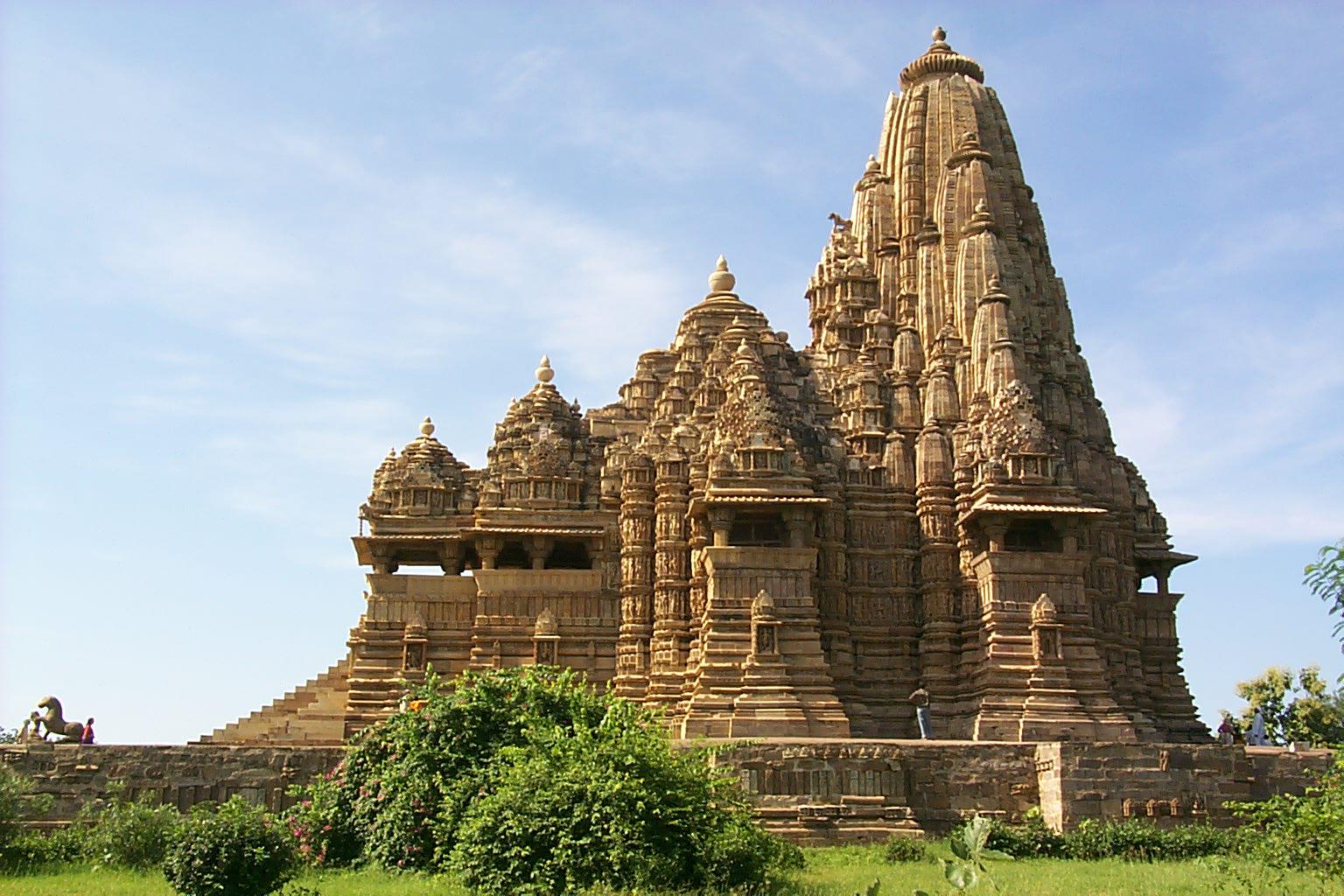
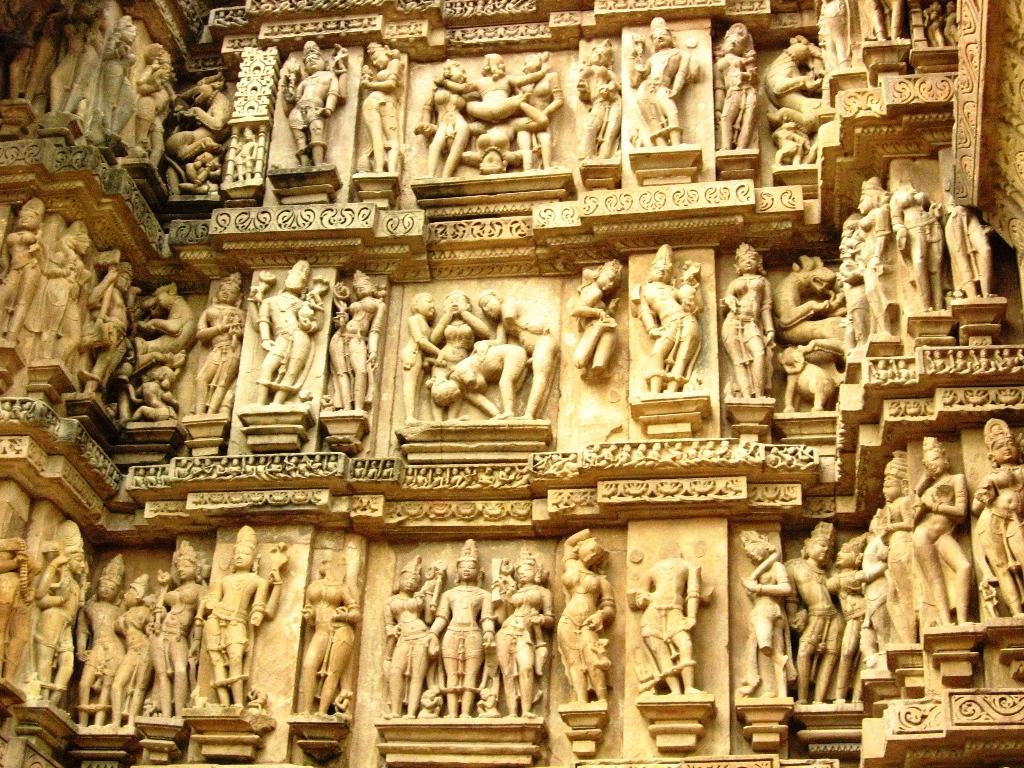
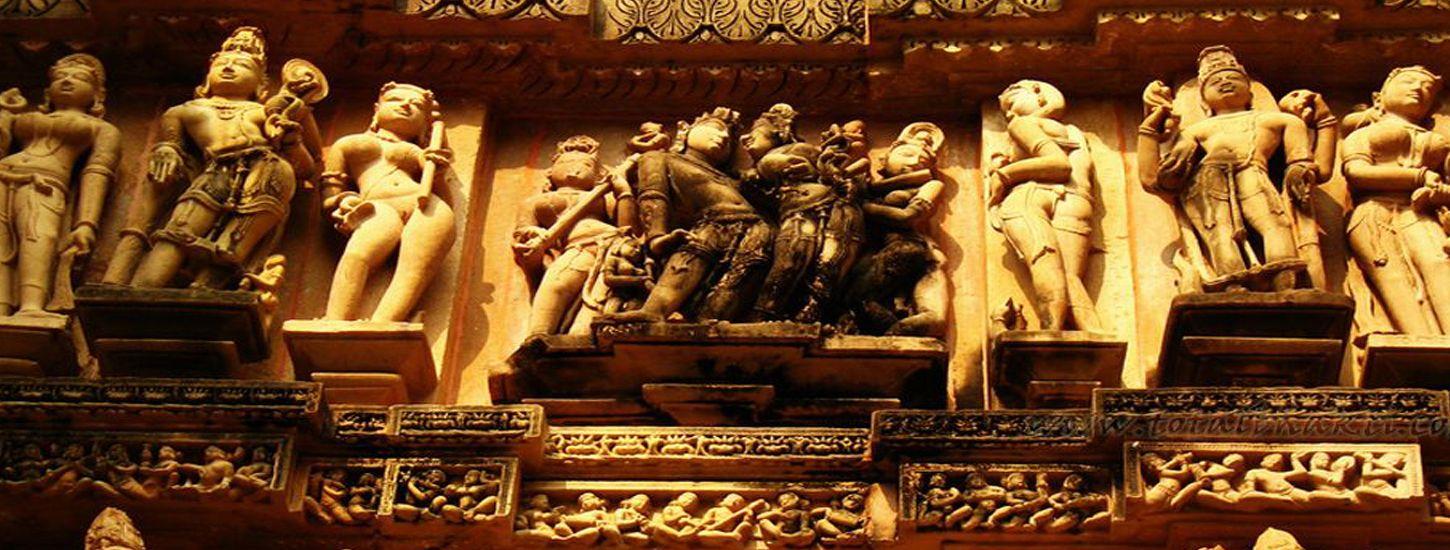
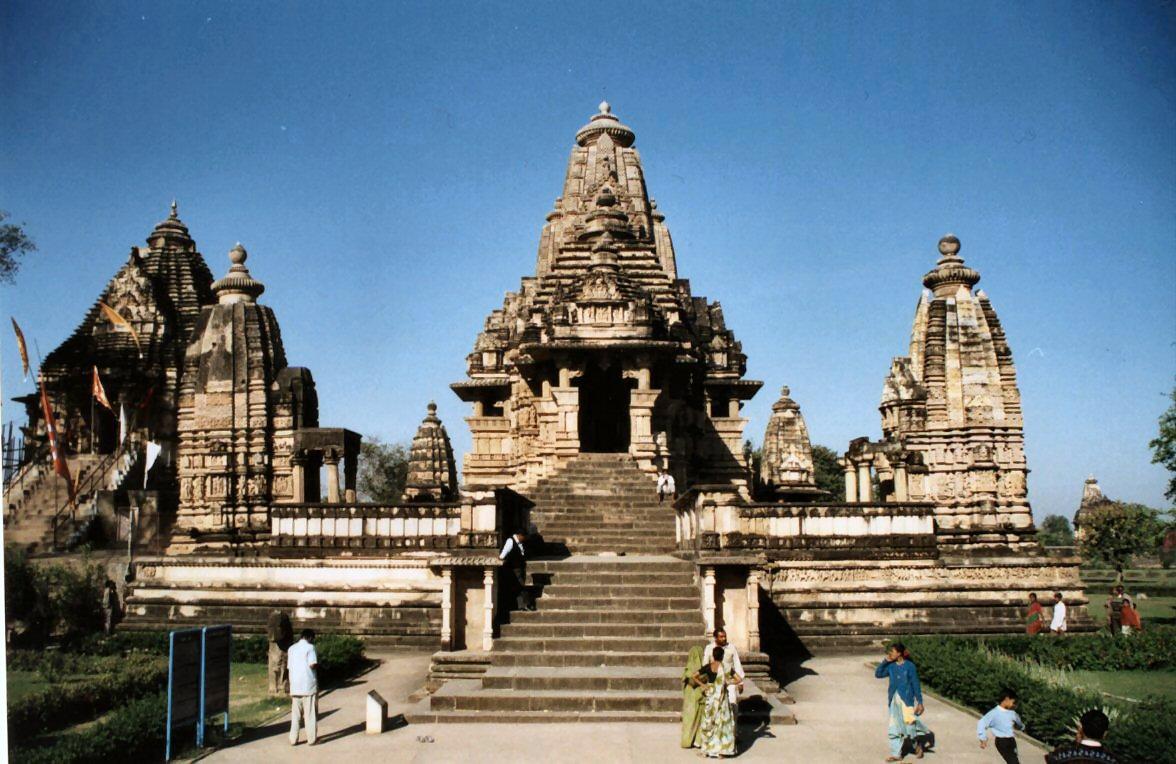
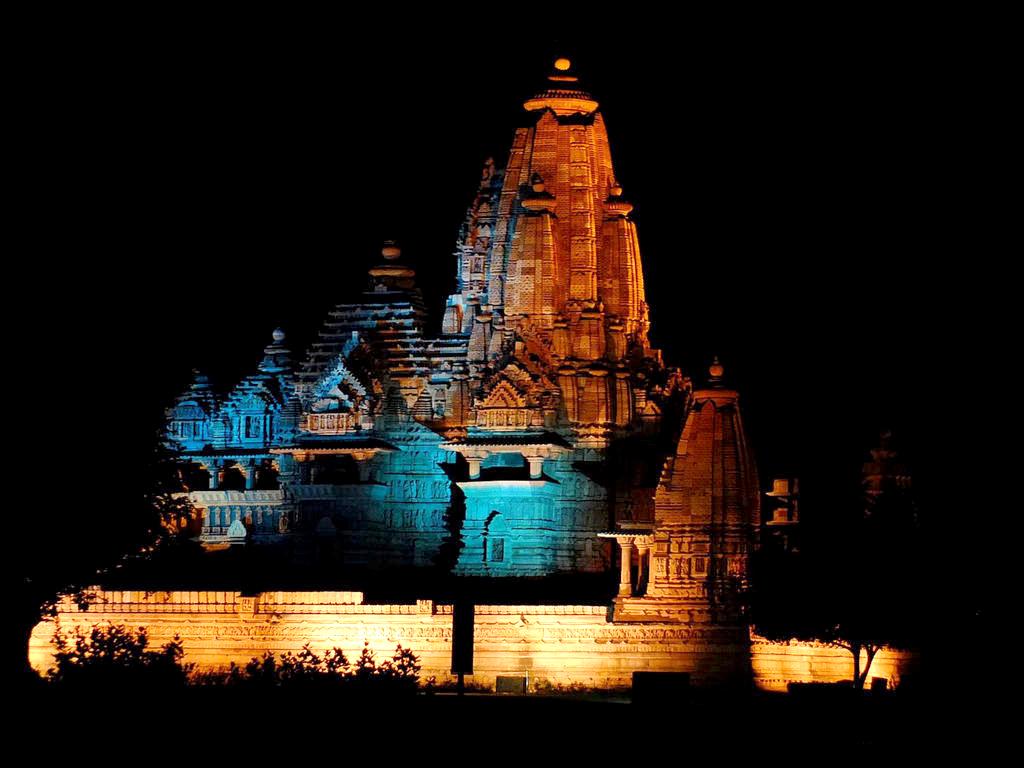
The art of soul has long been expressed on the stones of Bundelkhand that remained covert for epochs, until the inquisitive gestures of the British unearthed the “India” that slumbered in its deep past of her historical limbo. The living stones of Khajuraho reflect the beautiful temples, which emerged from the long lost deep woods of the forgotten landscapes. And before you flabbergast yourself in the temples of Khajuraho, there were many from in and out of this country, who were applaud, by what they discovered. These are the lost and erotic temples of India, which are still shrouded in secrecy. The quest to fathom these stunning sculptures and their reason for being here in these sacred places has failed the western imaginations. And those who created these wonders, reflecting the coexistence of the Hindu way of normal life and enigmatic backdrop of faith have long gone with the gales of years.
Relive the time of the poets in the hearts of the artisans, when they dwelled in the soul of the pomegranates, and dreamt and heard the seed of the emotion whispering in those gales of nights that someday they shall grow as trees, on this pious portico, and the stony branches will adore the singing winds. And as the Sun will visit the horizon again, it will dance beneath my stone arches and be strong and beautiful, making my wonders eternal and beyond time, like a temple witnessing a melodrama with its passive eyes, for over eons. This is Kajuraho for you that will immerse you in its myriad ways, as you visit it on a Moon lit night or explore its epic, engraved on the ancient granite and sandstones, under the soft ray of the morning Sun.
As you step into the courtyard of the temple complex, the ancient beauties of 20 temples will surround you with its Vastupurusamandala Manduka grid inlay of Hindu Vastu System, where the technological might of antique India will reflect in the structures, with the towering Shikharas or Vimanas, depicting the distant past of the legends, when the flying chariots of the Gods cruised the sky. Know not we, how the flying devices of the present age flew at those ancient skies or what all they used, to build these miracles.
Explore the sensual curves that still breathe in their stone curved beauty, swathing the temple complex in three groups of UNESCO World Heritage Site. With the stunning features of the Western Temples, the group of temples is the one having the finest temple art in the world. Your trip will be remembered in your life, as a trail through the history, where the remnants of the past turned to life, to let you live the extraordinary time that gave birth to Khajuraho. But as you visit the temple complex of Khajuraho, slowly; the play of the heavens that once was played in the land of Indus, will unfold again, for you to witness the work of art, preserved in the long alley of tradition, beheld so dearly, close to the heart.
Like many travellers, you might find this trip to be tiring, but it is worth to enlighten your spirit and raise your awareness. This mystic destination, along with its Vishnu, Hanuman, Devi or Shiva temples, the place will break the outlandish social dogmas, while juxtaposing the three fold path of the Hindu Philosophy, such as, to attain virtue, gain wealth, and enjoy pleasure, all to achieve the single goal of the life – that is to attain Moksha or liberation. Khajuraho is such a living example from the teaching of Kamasutra to the ethics of personal life that includes the social orders as well, but all explained in sculptures and figures, still standing as the silent testimony of the time, but stronger than any thunder.
Discover your root in the exhibiting of the artistic grandeur that explains the evolution of the Indian civilization, and its amalgamation with others on the Indo-Aryan architectural style. Nevertheless, feel the immaculate curves in the most liberally embellished manner, which had made Khajuraho a famous spectacle to have. Venture around the temples to dig the exceedingly artistic stonework poses around narrating the storyboard of life a millennium ago – about gods, about goddesses, about warriors, about musicians, and animals that are real and have vanquished to become the legends in the scores of time.
Discover faiths that steamed the ancients, in the vicinity of temples like Varaha, dedicated to Vishnu's boar incarnation, and the closed-up Lakshmi temple, which are the two small shrines facing the large Lakshmana Temple. Inside Varaha, there still harks the 1.5m-high sandstone boar, dating to 900-25, meticulously carved with a pantheon of gods. As you will absorb the ambience of the large Laxmana temple, an inscribed slab in the mandapa will cast you a thousand years look, to let you know that the shrine is standing since about 954 during the reign of Dhanga, and it took 20 years to build. One of the temple's many anonymous sculptors has added himself to a subsidiary shrine at the southwest corner.
One of the earliest and best-preserved architectural marvels in this complex, Lakshmana is dedicated to Vishnu, although its design reflects the look of the Shiva temples Vishvanath and Kandariya-Mahadev. After all, is it humanly possible to distinguish the Hari from Hara? The 30.5m-long Kandariya-Mahadev, built between 1025 and 1050, is the largest temple in this mystic town and represents the pinnacle of Chandelan architecture. Precisely, there are 872 acrobatic statues, 226 inside and 646 outside, most of which are nearly 1m high - taller and more slender than on the other temples. The 31m-high sikhara, will appear to be the phallic Shiva symbol, venerated by many for the deliverance from the cycle of reincarnation.
Meet the most ancient ancestor of any time, Mahadeva, a small ruined temple on the same platform as Kandariya-Mahadev and Devi Jagadamba, which is again, dedicated to Shiva, carved on the lintel of its doorway. Although small and insignificant compared to its mighty neighbours, here dwells one of the finest sculptures - Sardula - a mythical beast, part lion, part some other animal or even human - caressing a 1m-high lion. Devi Jagadamba was originally dedicated to Vishnu, but in time to Parvati and then Kali. Some believe it's still a Parvati temple and that the Kali image is actually Parvati, painted black. The carvings include sardulas accompanied by Vishnu, sarasundaris, and mithunas cavorting in the third uppermost band.
Unveil the Northern fringe of Devi Jagadamba and Chitragupta temples, which is unique in Khajuraho - and rare among north Indian temples. The place is being dedicated to the sun god - Surya. As you enter the temple structure, the very universe will greet you to the inner sanctum, where the divine Surya drives his seven-horse chariot, while on the central niche in the south facade is a 11-headed statue of Vishnu, representing the god and 10 of his 22 incarnations. It is a mesmerizing spectacle of Hindu mythos and logos of symbolism.
Lord Shiva’s Nandi, languidly squatting, while flanked by lions and elephants, temple of seven mothers amidst the Ganeshas and Virabhaddras, the ruins of 64 Yoginis and the only Yogini temple in India and more from the lore of the antiquity still live by the 30 meter high waterfall, 18km from the town of Khajuraho, like the time immemorial is still a churning mass over rocks, tumbled by the gales of time, until you really make a worthy trip, that too especially after the rain.
Are you interested to know more about the love stories of the time stood stoned?
Let us hear from you at +91 33 4046 4646
As suggested and to be customized as per request

 Loading..
Loading..